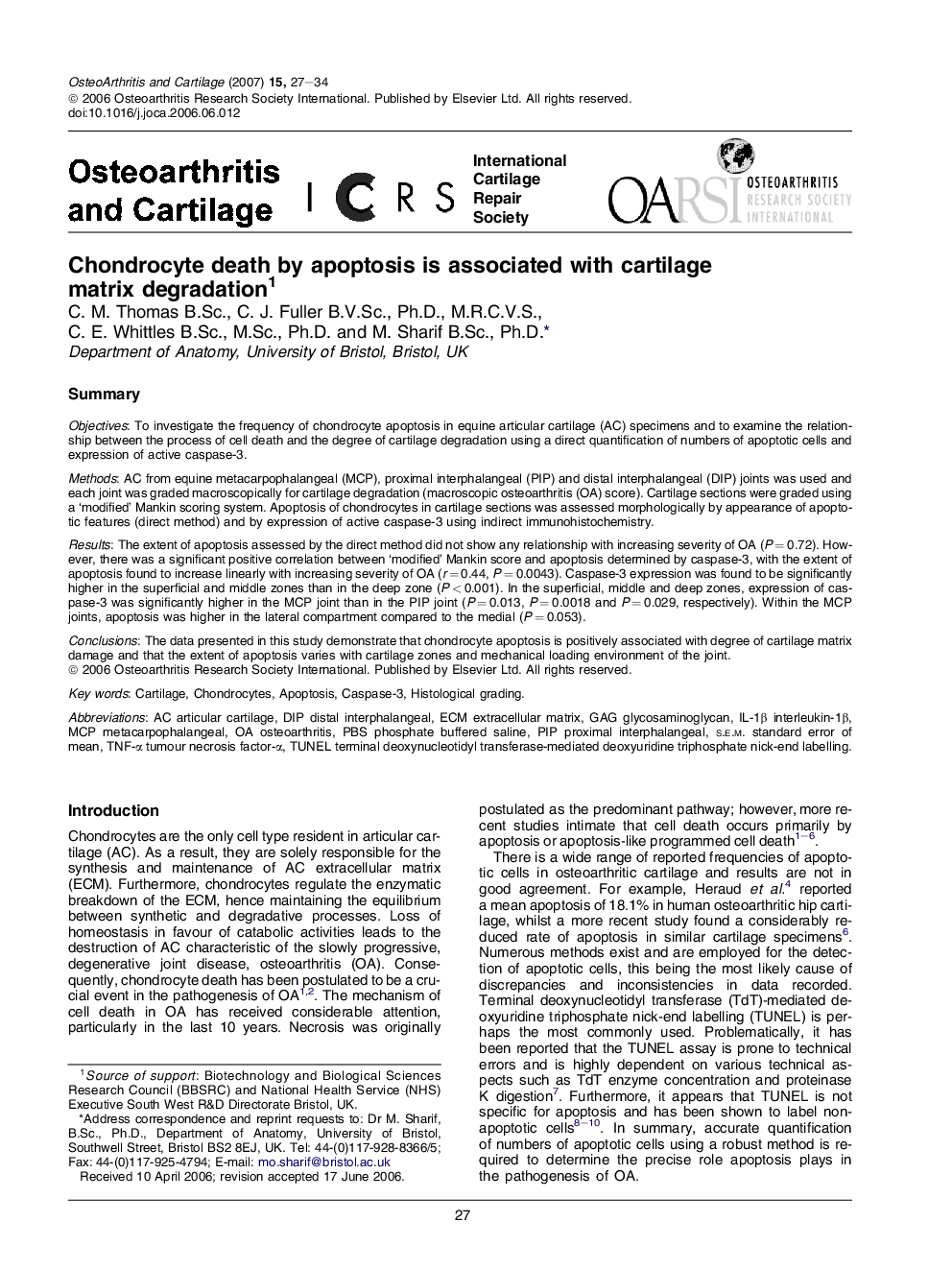| Article ID | Journal | Published Year | Pages | File Type |
|---|---|---|---|---|
| 3381864 | Osteoarthritis and Cartilage | 2007 | 8 Pages |
SummaryObjectivesTo investigate the frequency of chondrocyte apoptosis in equine articular cartilage (AC) specimens and to examine the relationship between the process of cell death and the degree of cartilage degradation using a direct quantification of numbers of apoptotic cells and expression of active caspase-3.MethodsAC from equine metacarpophalangeal (MCP), proximal interphalangeal (PIP) and distal interphalangeal (DIP) joints was used and each joint was graded macroscopically for cartilage degradation (macroscopic osteoarthritis (OA) score). Cartilage sections were graded using a ‘modified’ Mankin scoring system. Apoptosis of chondrocytes in cartilage sections was assessed morphologically by appearance of apoptotic features (direct method) and by expression of active caspase-3 using indirect immunohistochemistry.ResultsThe extent of apoptosis assessed by the direct method did not show any relationship with increasing severity of OA (P = 0.72). However, there was a significant positive correlation between ‘modified’ Mankin score and apoptosis determined by caspase-3, with the extent of apoptosis found to increase linearly with increasing severity of OA (r = 0.44, P = 0.0043). Caspase-3 expression was found to be significantly higher in the superficial and middle zones than in the deep zone (P < 0.001). In the superficial, middle and deep zones, expression of caspase-3 was significantly higher in the MCP joint than in the PIP joint (P = 0.013, P = 0.0018 and P = 0.029, respectively). Within the MCP joints, apoptosis was higher in the lateral compartment compared to the medial (P = 0.053).ConclusionsThe data presented in this study demonstrate that chondrocyte apoptosis is positively associated with degree of cartilage matrix damage and that the extent of apoptosis varies with cartilage zones and mechanical loading environment of the joint.
